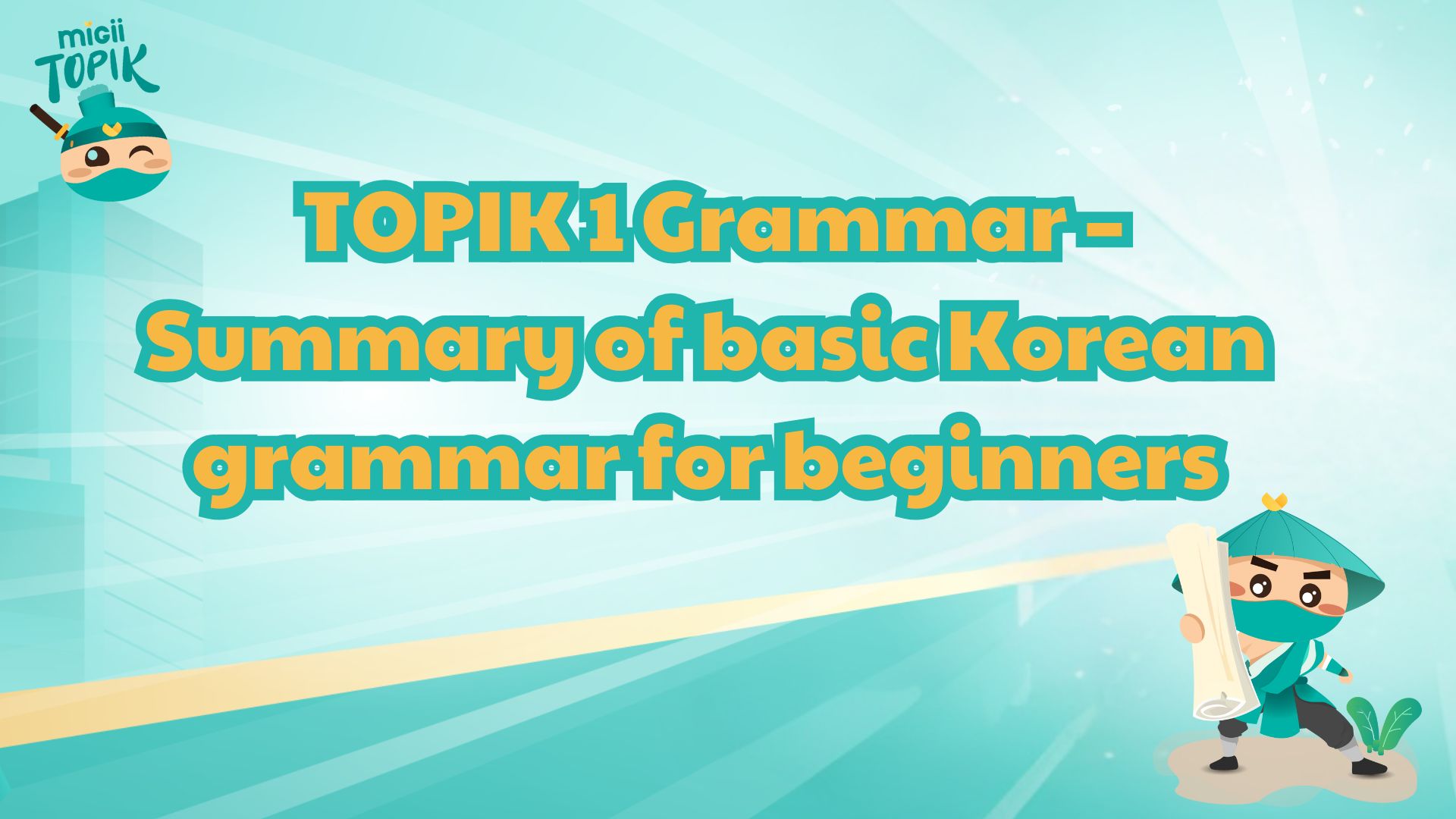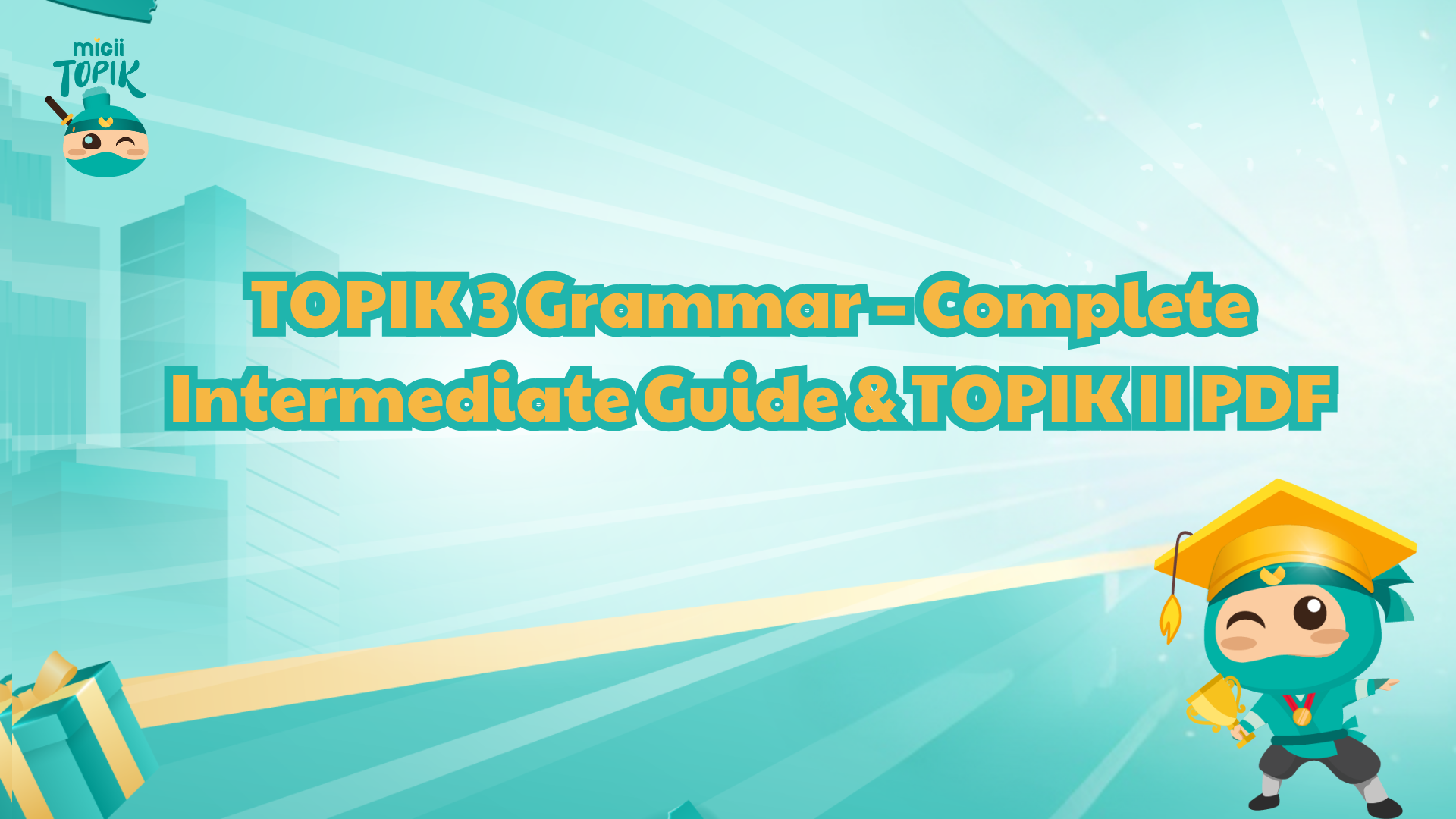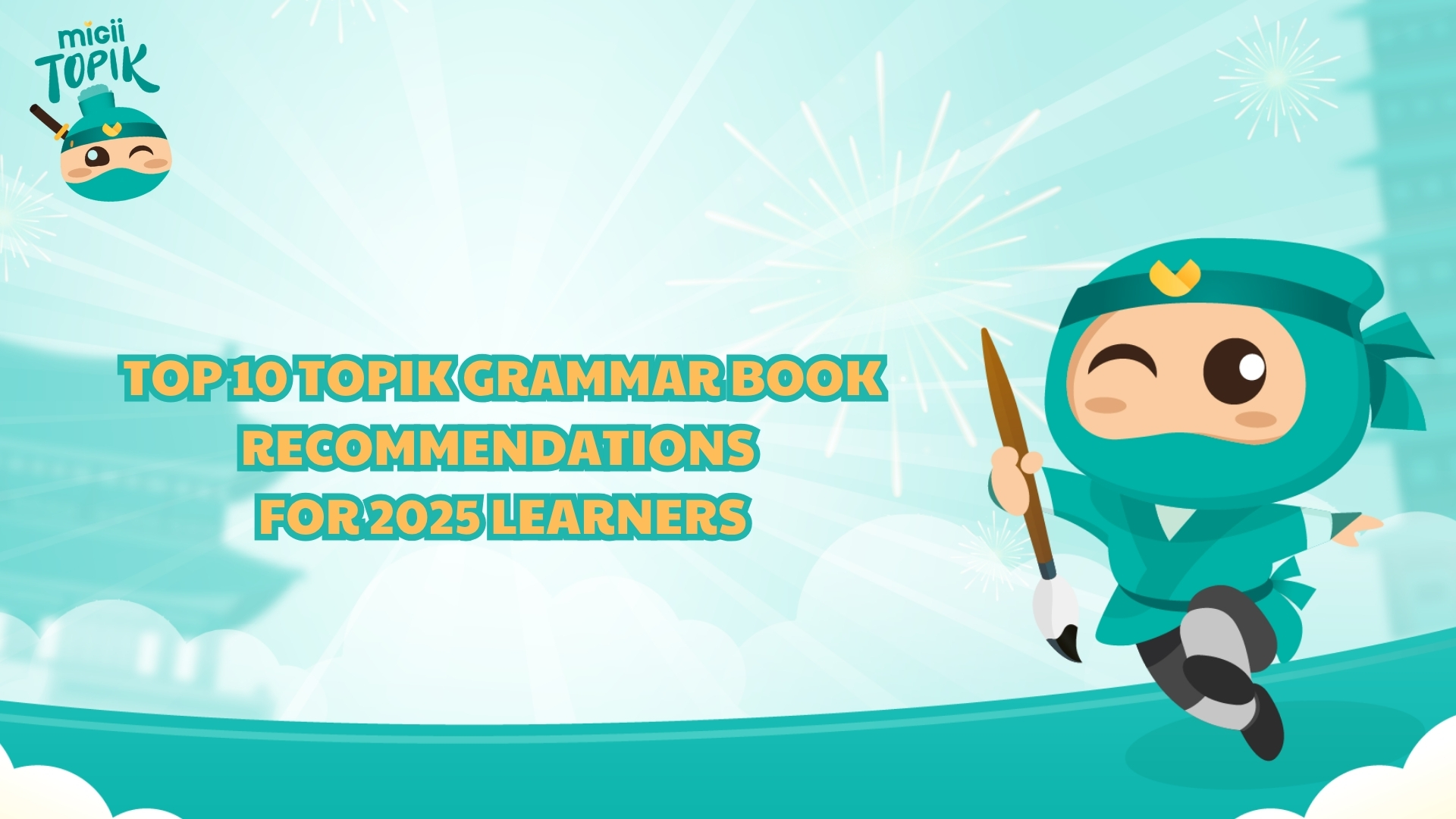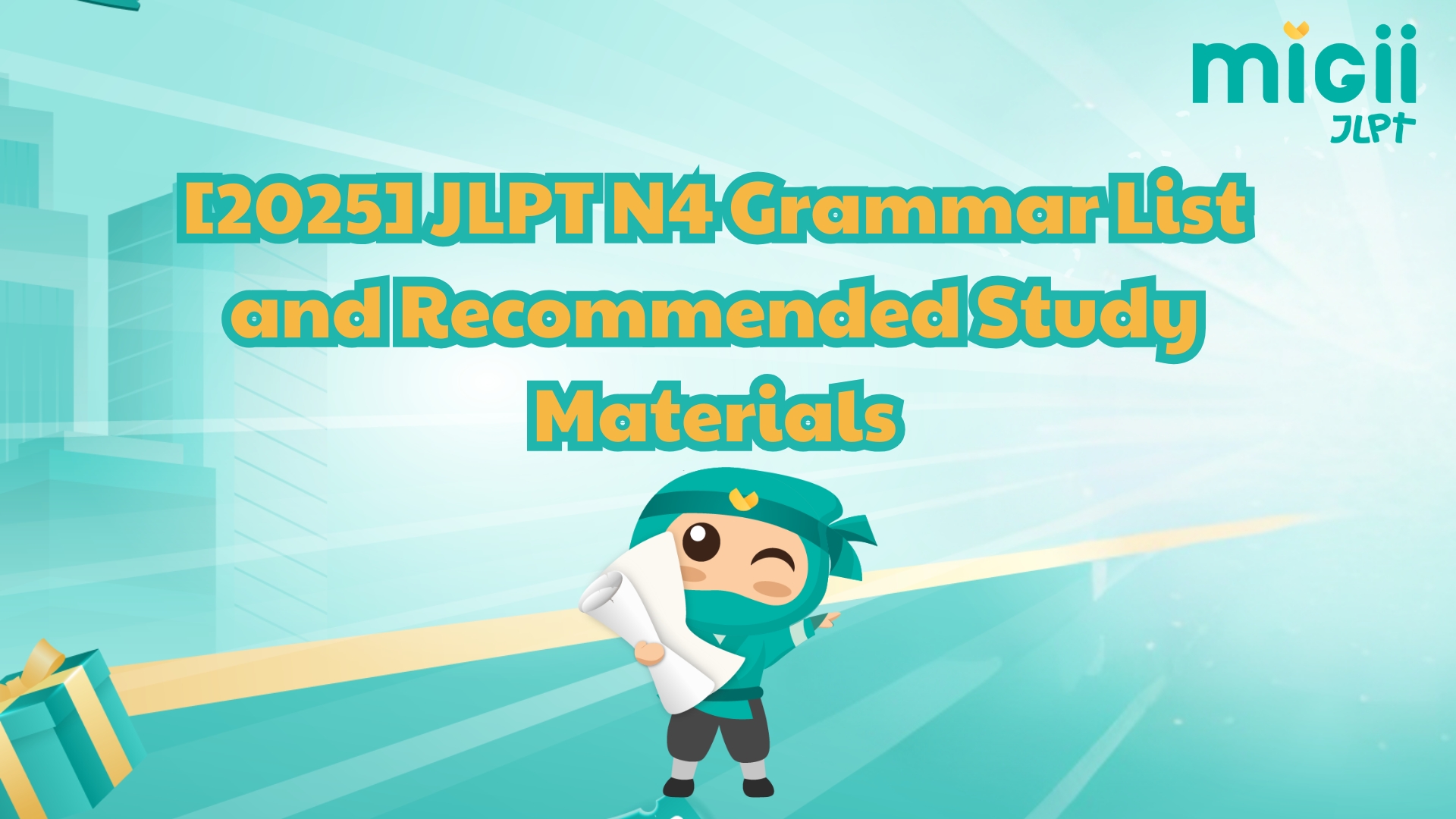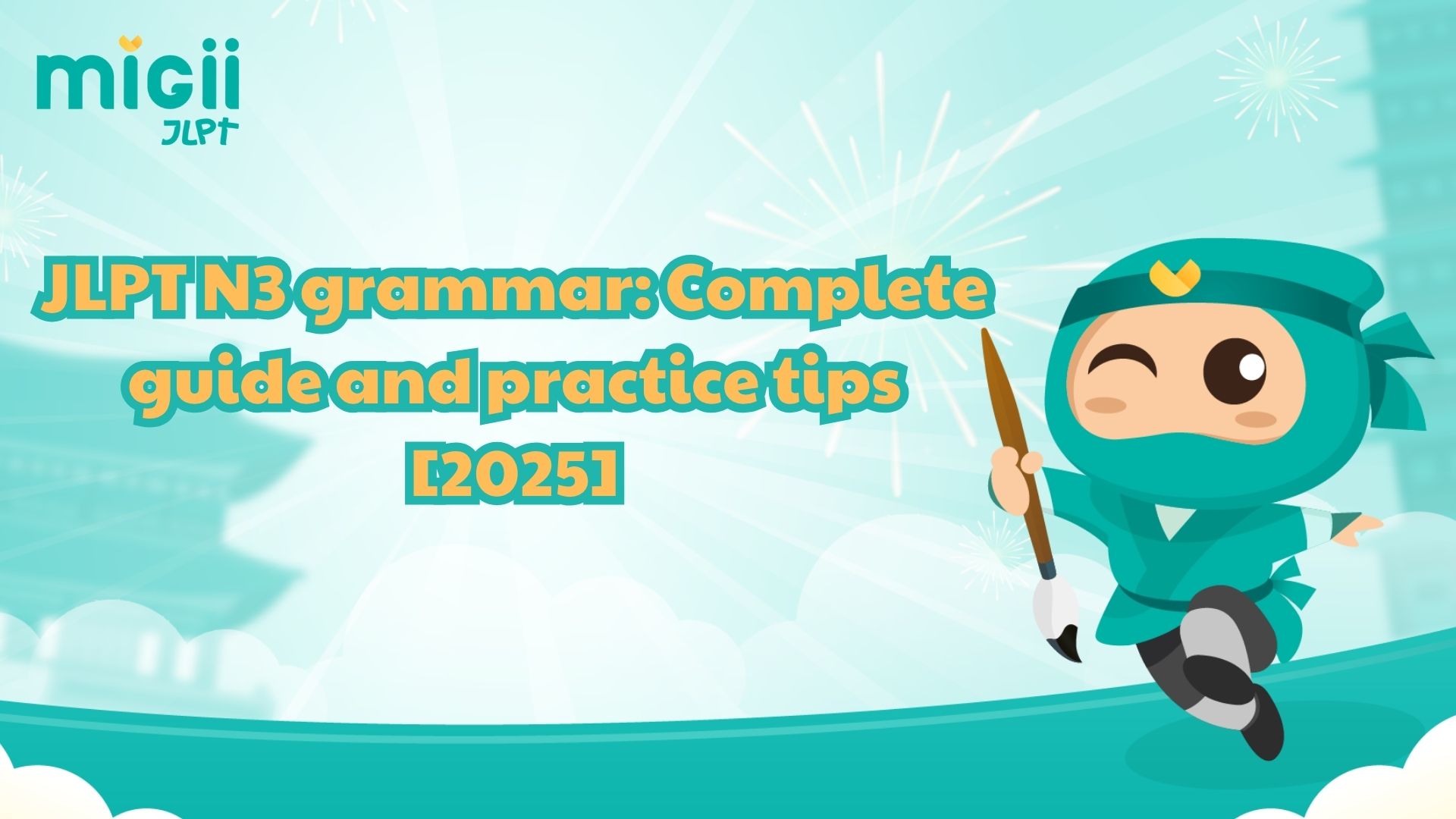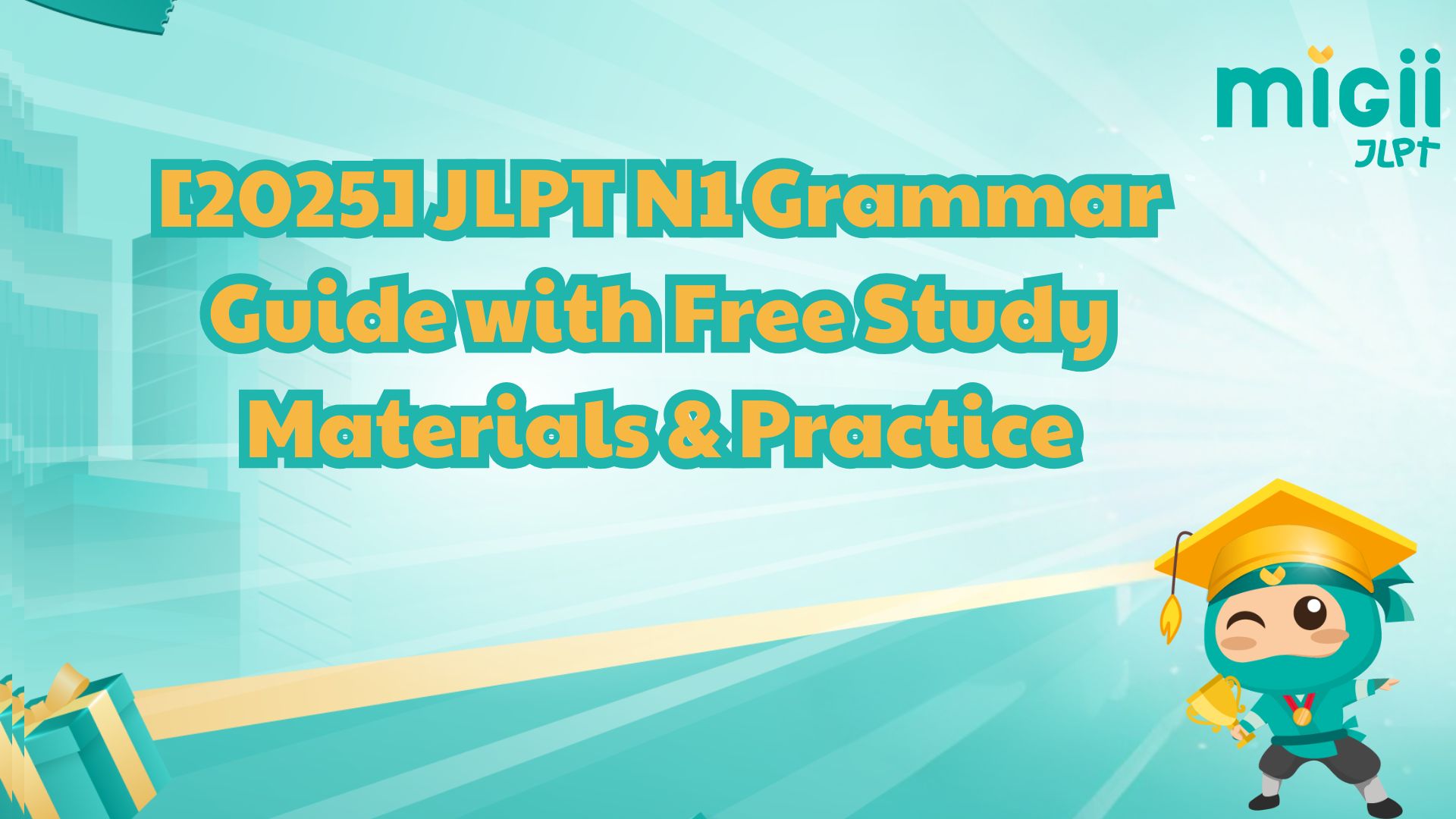TOPIK II grammar marks a major step toward Korean fluency, bridging the gap between basic communication and advanced language use. At this stage, learners must understand how grammar patterns express nuance, logic, and formality across academic, social, and professional contexts.
This comprehensive guide from Migii will show you how many grammar points to learn, effective ways to master them, and how to study directly on the Migii platform using structured lessons, quizzes, and real test practice.
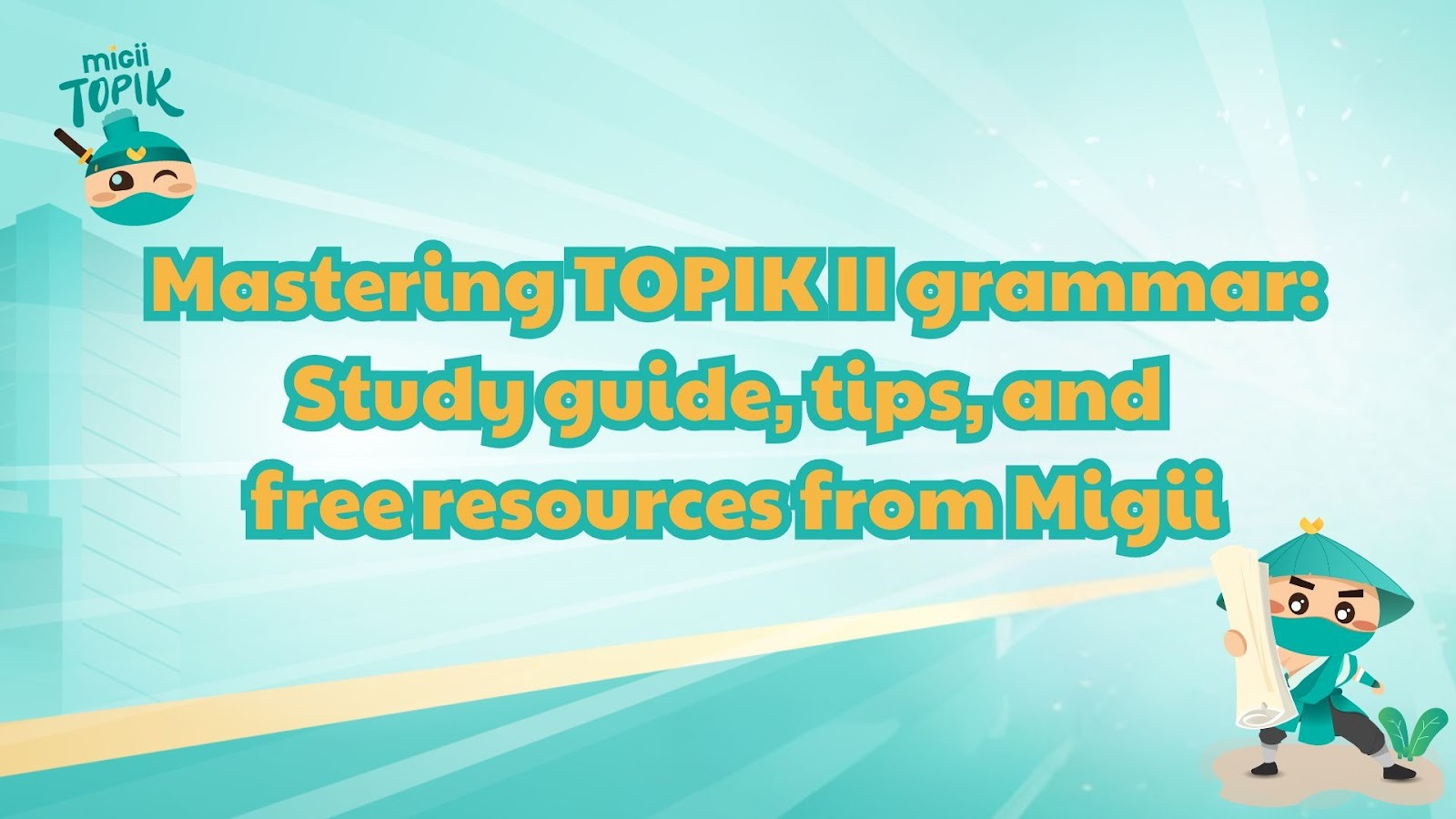
TOPIK II grammar
What is TOPIK II grammar?
The TOPIK II grammar section represents the next stage in mastering the Korean language after completing the basics covered in TOPIK I. It expands far beyond simple sentence structures, requiring learners to understand complex grammatical patterns, sentence connectors, and expressive forms used in real-life communication, academic writing, and professional contexts.
The TOPIK II grammar list includes key grammar points from TOPIK Level 2 to Level 6, each level building on the previous one to help you express ideas more fluently and naturally. At this stage, grammar is not just about forming correct sentences — it’s about conveying nuance, tone, and logical relationships between ideas. For instance, while a beginner might say “저는 한국어를 공부해요” (I study Korean), a TOPIK II learner might express contrast, cause, or assumption using structures like -기는 하지만 (although), -기 때문에 (because), or -(으)ㄹ지도 모르다 (might).
Unlike TOPIK I grammar, which focuses on basic tenses, particles, and polite sentence endings, TOPIK II grammar introduces:
- Advanced connectors that link sentences smoothly (e.g., -아서/어서, -지만, -는데도)
- Causative and passive forms that describe actions done by or to others (e.g., -게 하다, -아/어지다)
- Nominal and adverbial clauses used to form complex sentences (e.g., -(으)ㄴ/는 것 같다, -도록, -(으)면서)
- Conjunctive endings expressing relationships like reason, contrast, or intention
- Formal and written expressions found in essays, articles, and academic contexts (e.g., -(으)므로, -기 마련이다, -(으)ㄹ 수밖에 없다)
These grammar points allow learners to analyze texts, write logically structured essays, and communicate subtle emotions or opinions — skills that are tested heavily in the TOPIK II exam.
For learners preparing for TOPIK Level 2 grammar and beyond, mastering these structures is essential. Not only do they appear in reading and listening sections, but they also form the backbone of writing tasks, where understanding how to connect and contrast ideas can make a huge difference in your score.
In short, TOPIK II grammar helps you move from understanding “what” is being said to expressing “how” and “why” a key leap toward fluency and confident self-expression in Korean.
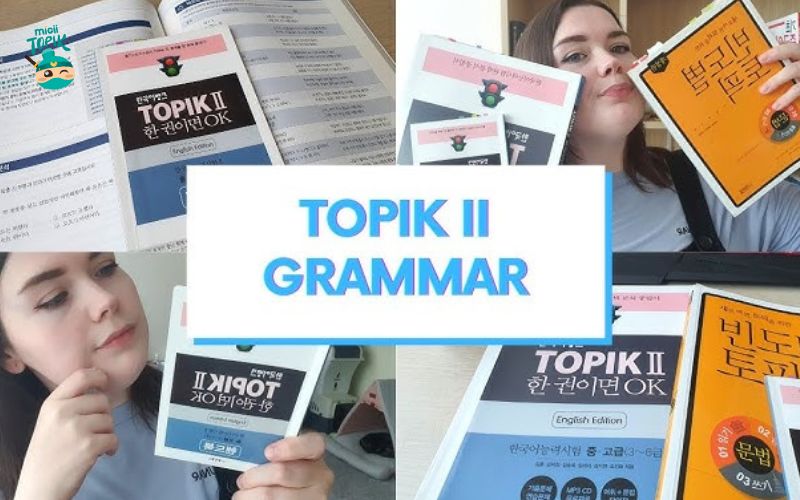
What is TOPIK II grammar
How many grammar points should you know for TOPIK II?
To achieve a solid score in the TOPIK II exam, learners need to build a strong foundation in Korean grammar that goes far beyond the basics covered in TOPIK I. The number of grammar points you should study varies depending on your target level, but generally, it ranges from 150 to 300 essential grammar structures.
Each level within TOPIK II—covering Levels 2 to 6—represents a different degree of linguistic complexity. As you progress, grammar patterns shift from simple connectors and verb endings to more advanced expressions that convey subtle nuances, logical relationships, and formal tones.
Below is a detailed overview of how grammar expectations increase across TOPIK II levels, along with examples to help you understand what to focus on at each stage.
TOPIK II grammar levels and estimated grammar points
|
TOPIK Level |
Focus Area |
Estimated Grammar Points |
Example Structures |
Explanation |
|
TOPIK 2 (Intermediate Foundation) |
Building basic fluency; expressing reasons, abilities, and choices |
120–150 |
-거나 (or), -아서/어서 (because), -(으)ㄹ 수 있다 (can) |
At this stage, learners develop the ability to link ideas, describe daily routines, and express cause, reason, or possibility. Grammar focuses on clear and simple communication. |
|
TOPIK 3–4 (Upper-Intermediate Grammar) |
Expressing opinions, contrasts, experiences; discussing social and cultural topics |
180–220 |
-기는 하지만 (although), -(으)ㄴ/는 편이다 (tend to), -아/어 보이다 (looks/seems) |
Grammar expands to include sentence connectors and descriptive expressions. You’ll learn to compare ideas, express personal views, and interpret tone or emotion in context. |
|
TOPIK 5–6 (Advanced grammar) |
Academic writing, formal communication, and logical reasoning |
250–300 |
-(으)ㄹ 뿐만 아니라 (not only... but also), -(으)ㄹ지도 모르다 (might), -거든요 (you see...) |
Learners can now handle academic or professional topics, connect complex ideas, and express abstract thoughts fluently. Grammar at this level is vital for essay writing and in-depth analysis. |
The TOPIK advanced grammar list includes structures frequently used in formal essays, academic papers, and news articles. Mastering when and how to use these forms naturally is crucial—not just for the exam but also for achieving genuine fluency in Korean.
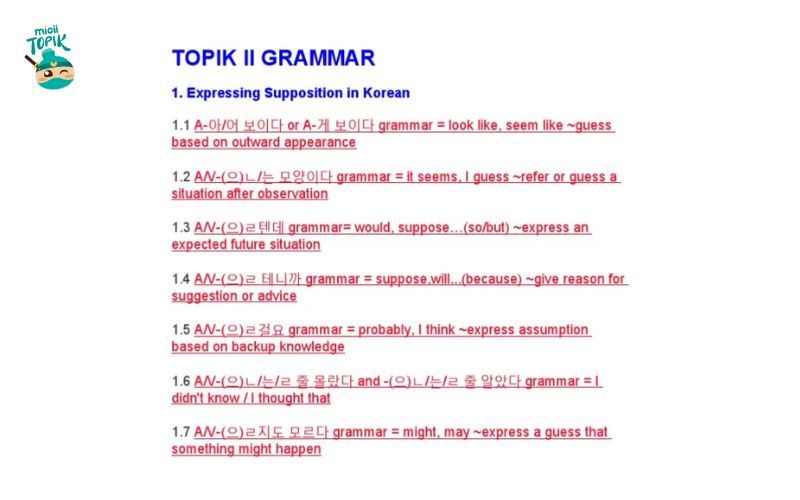
How many grammar points should you know for TOPIK II
How to study TOPIK II grammar effectively
Studying TOPIK II grammar requires more than memorizing individual patterns, it’s about understanding how grammar shapes meaning, connects ideas, and builds fluency in both writing and speaking. Whether you’re working through the TOPIK 2 grammar list or advancing toward higher levels, your goal should be to use grammar naturally and confidently in real-life communication. Below are four proven strategies to master grammar effectively and achieve success in the TOPIK II exam.
Learn by function and meaning
Instead of memorizing grammar points in random order, group them by their function and meaning. This method helps you see logical connections between forms and makes it easier to choose the right structure when expressing your thoughts.
For example, you can categorize your TOPIK grammar list as follows:
- Cause and effect: -아서/어서, -(으)니까, -기 때문에
→ These are used to explain reasons and causes in daily conversation or writing.
Example: 날씨가 추워서 집에 있었어요. (Because the weather was cold, I stayed home.) - Contrast and comparison: -지만, -(으)ㄴ/는 반면에
→ Common in essays and discussions, these show differences or opposing viewpoints.
Example: 그는 똑똑하지만 게을러요. (He is smart but lazy.) - Intention or plan: -(으)려고 하다, -고자 하다
→ Used to express personal plans or goals, often in both written and spoken contexts.
Example: 내년에 한국에 유학을 가려고 해요. (I plan to study abroad in Korea next year.)
Organizing your TOPIK II grammar list this way allows you to compare similar patterns and understand their nuances. It’s especially effective for learners transitioning from TOPIK level 2 grammar to intermediate and advanced grammar, as it encourages functional understanding rather than rote memorization.
Learn through context, not isolation
Grammar is meaningful only when seen in action. Instead of studying isolated definitions, immerse yourself in context-based learning by reading dialogues, watching Korean dramas, and practicing with example sentences.
For instance:
“날씨가 추워서 집에 있었어요.” (Because the weather was cold, I stayed home.)
Here, the particle -아서/어서 clearly shows the cause-and-effect relationship. When you see how grammar behaves in real sentences, you gain an intuitive understanding of when to use it.
To improve your TOPIK intermediate grammar comprehension, try collecting real examples from:
- Korean news articles
- Webtoons or dramas (with subtitles)
- Reading and writing sections in TOPIK past papers
By analyzing grammar in context, you learn not just the structure but also its tone, formality level, and natural usage — which are all essential skills for succeeding in TOPIK II grammar sections.
Use spaced repetition for long-term mastery
The human brain forgets quickly if information isn’t reviewed systematically. Applying spaced repetition to grammar learning ensures that you retain structures over time. Here’s an effective schedule to follow:
- Day 1: Learn new grammar points from your TOPIK 2 grammar list.
- Day 3: Review them and create your own example sentences.
- Day 7: Read short passages or dialogues containing those grammar forms.
- Day 14: Write a short paragraph or diary entry using the grammar naturally.
This 1-3-7-14 review system gradually moves knowledge from short-term to long-term memory. You can use digital flashcards or apps that include TOPIK grammar list PDFs and revision reminders. Over time, this habit will help you recall even complex patterns from the TOPIK advanced grammar list effortlessly during the exam.
Practice writing and speaking regularly
True grammar mastery comes from active use, not passive recognition. To internalize TOPIK II grammar, make it part of your daily routine through writing and speaking practice.
Here’s how you can apply new structures actively:
- Write one short paragraph daily using 2–3 new grammar patterns.
- Summarize an article or describe your day aloud, focusing on TOPIK level 2 grammar and beyond.
- Record yourself speaking to review pronunciation, fluency, and accuracy.
- Engage in language exchanges or online discussions to use grammar naturally in conversation.
When you actively produce grammar through multiple channels — listening, speaking, reading, and writing — your brain forms stronger connections. This integrated learning approach transforms grammar from abstract knowledge into automatic language skills, which is crucial for high performance in both the 쓰기 (writing) and 말하기 (speaking) sections of the TOPIK II exam.
Final tip: Combine multiple study resources
Don’t rely on a single book or app. Combine different materials, such as:
- A TOPIK II grammar list PDF for quick reference and review.
- Practice exercises from past TOPIK intermediate grammar papers.
- Real-life materials like news reports, essays, or interviews that use TOPIK advanced grammar list structures.
Mixing structured study with authentic Korean content helps bridge the gap between academic grammar learning and real-world fluency.
Mastering TOPIK II grammar is not about memorizing hundreds of rules but about understanding how grammar works in meaning, structure, and communication. By learning functionally, reviewing systematically, and practicing actively, you’ll gain the confidence to write, speak, and think in Korean like a true intermediate or advanced learner.
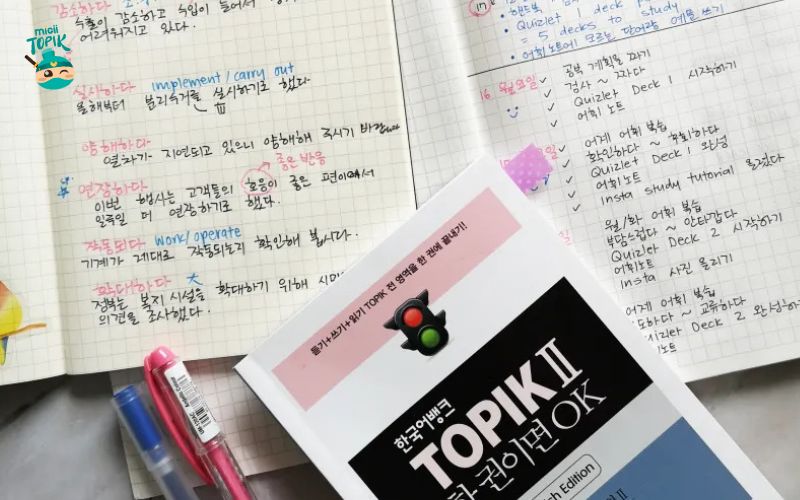
How to study TOPIK II grammar effectively
Free TOPIK II grammar resources from Migii
If you’re preparing for the TOPIK II exam, having reliable, structured grammar materials is essential for building a strong foundation. Migii provides a collection of free downloadable TOPIK II grammar resources, including TOPIK 2 grammar list PDFs in both English and Vietnamese, as well as EPS TOPIK grammar books. These resources are designed to support learners from beginner to advanced levels, helping you study grammar efficiently and confidently for the TOPIK test.
TOPIK 2 grammar list PDF
The English version of the TOPIK 2 grammar list is ideal for learners who prefer studying in English or want to strengthen bilingual understanding. It provides more than 200 essential grammar points from the TOPIK II grammar list, covering everything from intermediate to advanced structures.
Each grammar point includes:
- Clear English explanations for easy comprehension.
- Example sentences showing how grammar is used in real-life communication.
- Usage notes and comparisons between similar grammar forms (for example, -지만 vs. -(으)ㄴ 반면에).
- A summary table that connects intermediate and TOPIK advanced grammar list items to help you review effectively.
This version is perfect for learners preparing for TOPIK Level 3 to Level 6, or for those who need a reliable English reference to enhance their grammar comprehension.
Download the TOPIK 2 grammar list PDF by Migii
EPS TOPIK grammar book (Book 1 + 2, 60 lessons)
Migii also offers a free EPS TOPIK Grammar resource, which includes 60 structured lessons from Book 1 and Book 2. This material focuses on practical grammar patterns used in everyday life and the EPS TOPIK test, helping learners improve communication skills for work and daily situations.
Inside this resource, you’ll find:
- Step-by-step grammar lessons aligned with TOPIK 1 and TOPIK 2 grammar topics.
- Vocabulary lists for each lesson to reinforce contextual learning.
- Example sentences to improve comprehension and speaking ability.
- Exercises that strengthen both grammar and vocabulary retention.
This is an excellent resource for learners preparing for both EPS TOPIK and TOPIK beginner or intermediate exams.
Download the EPS TOPIK grammar book (Book 1 + 2, 60 Lessons) by Migii
Learning TOPIK II grammar with the Migii platform
Preparing for the TOPIK II exam requires more than just memorizing grammar points, it demands a systematic and interactive approach that helps you understand how grammar functions in real communication. The Migii platform provides exactly that: a complete, structured system designed to help learners master TOPIK II grammar through comprehensive theory lessons, practical examples, quizzes, and mock tests. Instead of studying grammar in isolation, Migii guides learners through real-world contexts where each structure is applied naturally, making it easier to retain and use effectively during the exam.
Korean learning materials on Migii
Migii offers an all-in-one learning environment that covers every skill needed for the TOPIK test, including grammar, vocabulary, reading, listening, and writing from TOPIK 1 to TOPIK 6. The TOPIK II grammar section is especially well-structured, with each lesson designed to build understanding step by step. Every grammar point comes with a clear explanation of its meaning and structure, followed by practical example sentences that show how the expression is used in real-life communication. After each lesson, learners can take a short quiz to reinforce memory and check their understanding immediately.
Because Migii follows the official TOPIK exam format, learners can steadily strengthen their grammar foundation and move confidently from TOPIK 2 grammar to TOPIK intermediate and even the TOPIK advanced grammar list. This organized learning path ensures that users don’t just memorize patterns but learn how to use them accurately in both spoken and written Korean.
Grammar theory and practice for TOPIK II
The Grammar Theory section on Migii is specifically created for clarity and ease of understanding. Each grammar point is broken down into simple explanations, supported by visual notes, comparison charts, and carefully selected example sentences. This method allows learners to understand subtle differences between similar expressions - a crucial skill for higher TOPIK II grammar questions that often test nuance and accuracy.
After studying theory, learners can immediately apply their knowledge through interactive quizzes that provide instant feedback. The platform highlights correct and incorrect answers, enabling users to identify their weak points and revisit lessons as needed. This smart learning cycle study, test, and review helps you retain grammar knowledge longer and apply it naturally. By using Migii, learners can manage all aspects of grammar learning in one place, eliminating the need for multiple textbooks or separate grammar guides.
Practicing TOPIK and EPS TOPIK tests on Migii
Once you have completed the grammar theory lessons, Migii allows you to test your knowledge through TOPIK and EPS TOPIK practice tests that closely mirror real exam conditions. These full-length mock tests include listening, reading, and writing sections, helping you not only recognize grammar patterns in authentic contexts but also improve comprehension, sentence structure, and fluency.
Consistent practice with Migii’s mock exams helps bridge the gap between theory and real-world application. Learners develop the ability to quickly identify TOPIK II grammar structures while reading or listening and to use them naturally in writing essays or expressing opinions. By repeatedly practicing under exam-like conditions, users gain confidence, accuracy, and speed all essential skills for achieving a high score in the TOPIK II test.
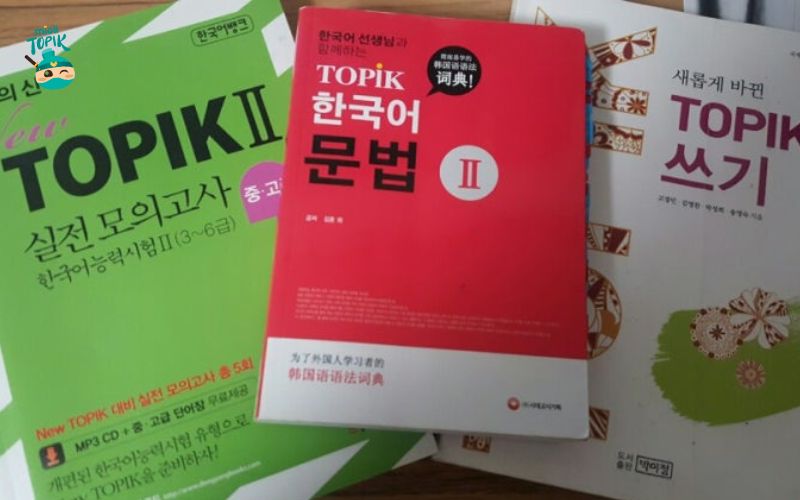
Learning TOPIK II grammar with the Migii platform
Conclusion
Mastering TOPIK II grammar is essential to achieving fluency and scoring high on the Korean Proficiency Test. With consistent practice, context-based learning, and smart study habits, you can build a strong command of both intermediate and advanced grammar structures.
Migii’s well-organized lessons, grammar lists, and practice tests make it easier than ever to prepare effectively. With Migii TOPIK by your side, you’ll be fully equipped to master TOPIK II grammar and confidently advance your Korean proficiency to the next level.
